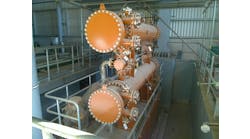You might have heard a lot of buzz about last year’s revision to OSHA’s electrical standard and how it incorporated the National Fire Protection Association’s NFPA 70E, Standard for Electrical Safety in the Workplace. That is not entirely the case.
OSHA revised its electrical standard, but it revised only one section, the Design Safety Standards for Electrical Systems (29 CFR 1910.302 through .308). It didn’t touch the Safety-Related Work Practices section (29 CFR 1910.331 through .335).
So, the bottom line is, nothing has changed regarding arc flash, working on deenergized electrical systems, working on live electrical components, lockout/tagout procedures or electrical personal protective equipment (PPE).
If you have been doing things correctly in the past, then this article will be a refresher. If you’re not sure you’re doing things right, this article might help you to get on track.

